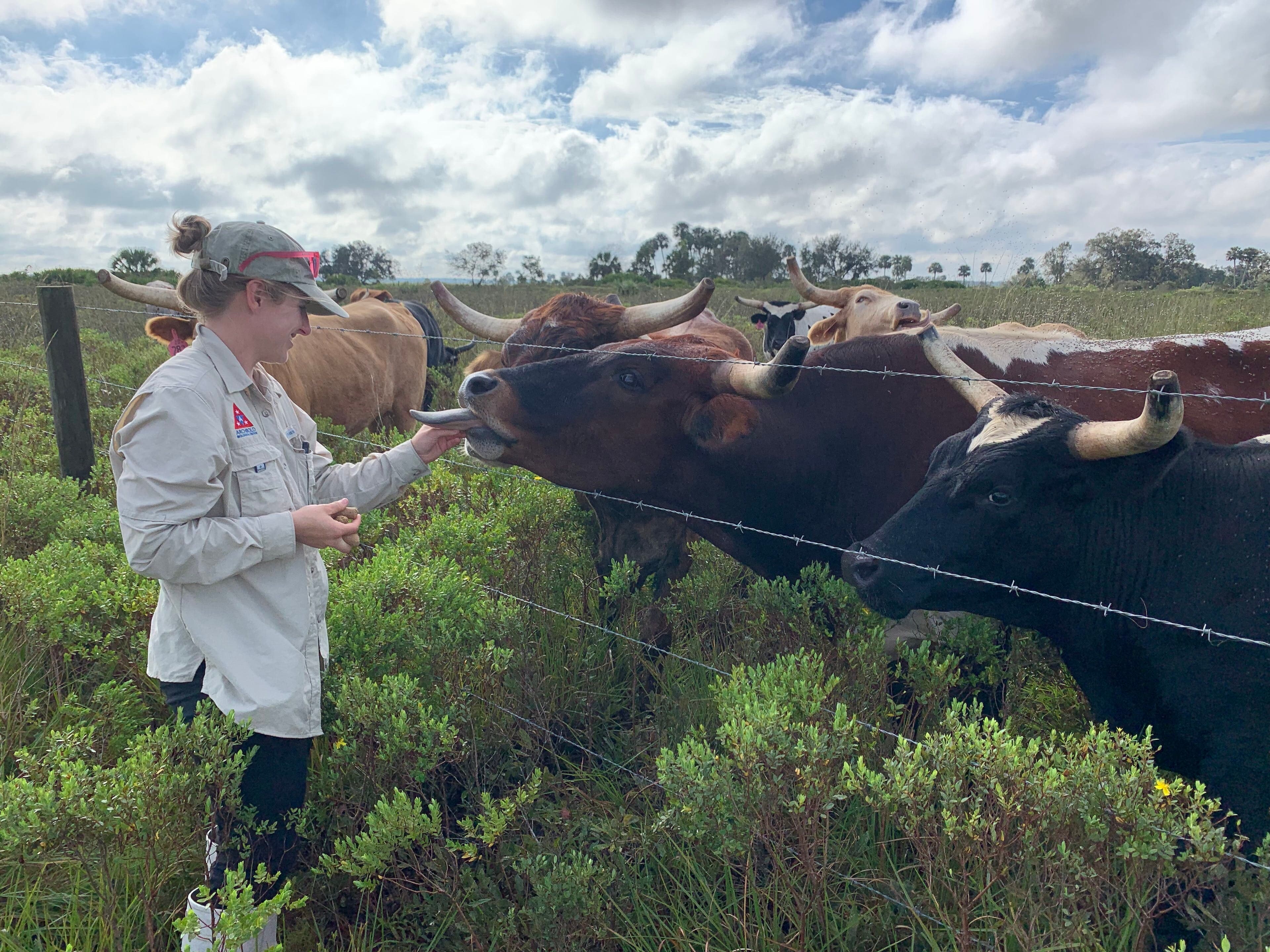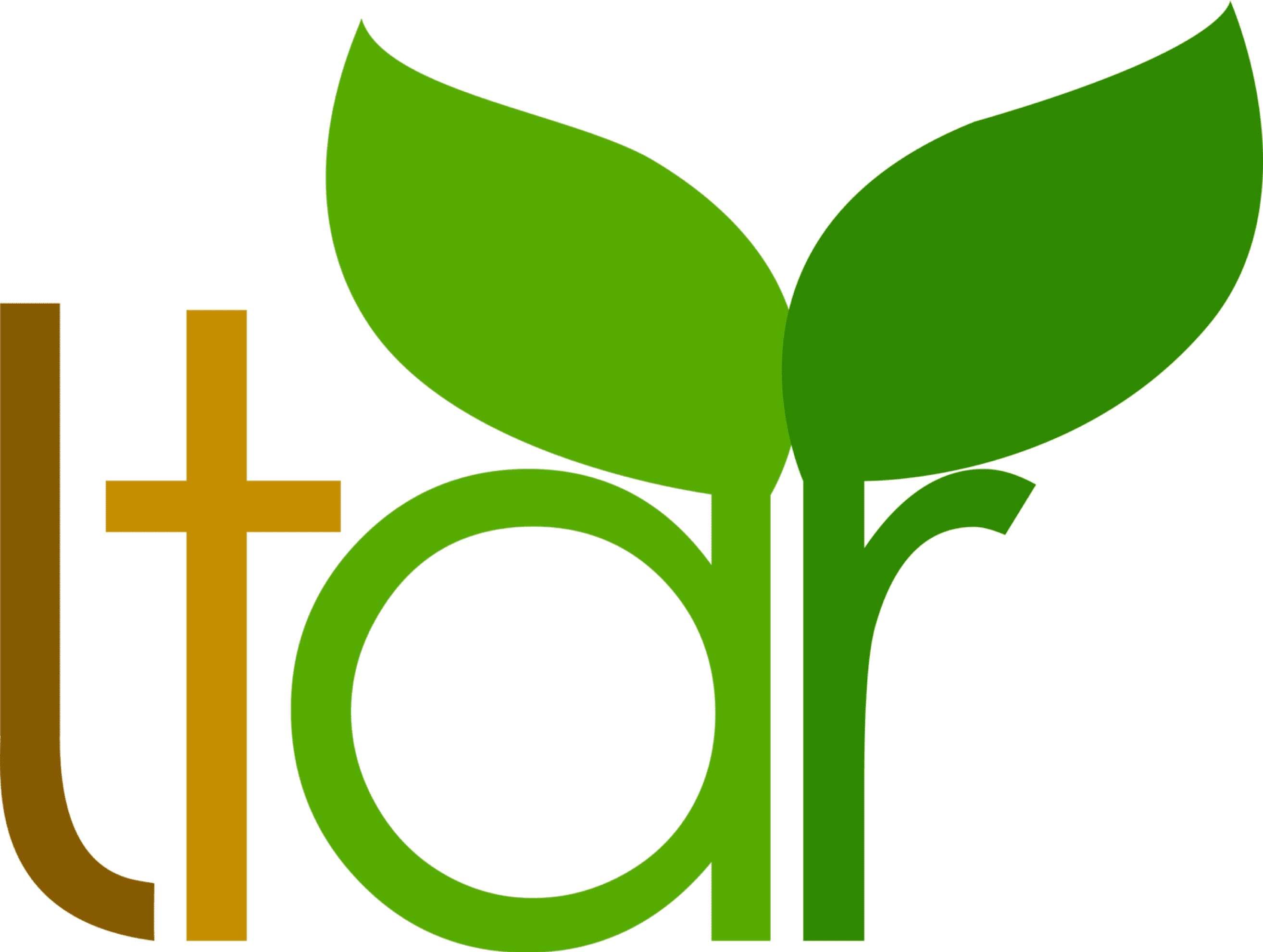
Carbon and Cows
Are grazing lands a source or sink for carbon?
In the United States, only 3.8% of greenhouse gas emissions come directly from livestock primarily from digestion of grass in the rumen (enteric methane) and nitrous oxide. Although the US beef industry has made significant advances in reducing its environmental footprint, the cow-calf phase is responsible for ~ 70% of the greenhouse gas (GHG) emissions in the beef value chain prior to the harvest of beef cattle. A typical cow-calf operation like Buck Island Ranch releases a variety of greenhouse gases, including carbon dioxide (CO2), methane (CH4), and nitrous oxide (N2O). Methane has 28x and N2O has 298x the global warming potential compared to CO2. On the other hand, grasslands, wetlands, and woodlands all absorb CO2 from the atmosphere. The net carbon balance is calculated as the emissions minus the ecosystem uptake of carbon and this balance is affected by grazing and fire management. Our research seeks to address the question, is Archbold’s 10,500-acre cow-calf operation a sink or source for greenhouse gases? We also work in grazing lands across the USDA LTAR network to contribute to a comprehensive understanding of the soil carbon sequestration potential, net ecosystem carbon balance and the global warming potential of grazing lands across climatic regions and soil and vegetation types to identify and promote mitigation opportunities to reduce the overall US beef carbon footprint while also increasing the productivity and building resilience to climate change.
Major Findings
1. Wet soils and wetlands are a large source of methane. A study conducted at Buck Island Ranch showed that landscape emissions were the dominant methane source, and cattle were responsible for 19-30% of annual emissions.
2. Cattle grazing increased net storage of C and decreased the global warming potential of a semi-native pasture.
3. Improved pastures were greater CO2 sinks but had higher methane emissions compared to semi-native pastures.
4. Higher soil carbon (0-15 cm depth) is associated with higher productivity and greenness as measured by long-term remote sensing data (EVI).
5. Grazing increased root biomass, fine root exudates, and microbial biomass, and therefore grazed pasture contained greater total soil organic carbon compared to ungrazed in improved pastures.
Current work is focused on using modeling to scale up field scale research to the ranch level and utilize life cycle analysis combined with ecosystem models to assess net carbon balance.
Project Details
More about this project
Collaborators
Dr. Jed Sparks, Cornell University; Dr. Maria Silveira, University of Florida; Cr. Carl Bernacchi, Dr. Evan Delucia, University of Illinois; Dr. Nuria Gomez-Casanovas, Texas A&M University; Dr. Jasmine Dillon, Colorado State University; USDA LTAR; USDA Climate Hubs; Alltech; Habiterre
Data and Analysis Types
Forage production and quality , Soil carbon and nutrients, Soil bulk density, Carbon flux , Methane flux, Nitrous oxide flux
Primary Locations
Buck Island Ranch, LTAR
Years Active
2013-Present
Related People
Related Programs
Related Projects
Related Publications
1. Paudel, S., Gomez-Casanovas, N., Boughton, E. H., Chamberlain, S. D., Wagle, P., Peterson, B. L., ... & Steiner, J. L. (2023). Intensification differentially affects the delivery of multiple ecosystem services in subtropical and temperate grasslands. Agriculture, Ecosystems & Environment, 348, 108398.
2. Wade, C., Sonnier, G., & Boughton, E. H. 2022. Does Grazing Affect Soil Carbon in Subtropical Humid Seminatural Grasslands?. Rangeland Ecology & Management, 80, 10-17.
3. Haddix. J.D. Economic approaches to allocation of life cycle environmental burdens between beef production systems and ecosystem services. MS Thesis, Colorado State University.
4. Gomez‐Casanovas, N., DeLucia, N. J., DeLucia, E. H., Blanc‐Betes, E., Boughton, E. H., Sparks, J., & Bernacchi, C. J. (2020). Seasonal controls of CO2 and CH4 dynamics in a temporarily flooded subtropical wetland. Journal of Geophysical Research: Biogeosciences, 125(3), e2019JG005257.
5. DeLucia, N.J., Gomez‐Casanovas, N., Boughton, E.H. and Bernacchi, C.J., 2019. The role of management on methane emissions from subtropical wetlands embedded in agricultural ecosystems. Journal of Geophysical Research: Biogeosciences.
6. Gomez-Casanovas, N., N.J. DeLucia, C.J. Bernacchi, E.H. Boughton, J.P. Sparks, S.D. Chamberlain, and E.H. DeLucia. 2018. Grazing alters net ecosystem C fluxes and the global warming potential of a subtropical pasture. Ecological Applications 28:557-572.
7. Ho, J., E.H. Boughton, D.G. Jenkins, G. Sonnier, P.J. Bohlen, and L.G. Chambers. 2018. Ranching practices interactively affect soil nutrients in subtropical wetlands. Agriculture, Ecosystems, and Environment 254:130-137.
8. Chamberlain, S. D., Groffman, P. M., Boughton, E. H., Gomez-Casanovas, N., DeLucia, E. H., Bernacchi, C. J. and Sparks, J. P. (2017), The impact of water management practices on subtropical pasture methane emissions and ecosystem service payments. Ecol Appl, 27: 1199–1209. doi:10.1002/eap.1514
9. Wilson, C. H., Caughlin, T. T., Rifai, S. W., Boughton, E. H., Mack, M. C. and Flory, S. L. (2017), Multi-decadal time series of remotely sensed vegetation improves prediction of soil carbon in a subtropical grassland. Ecol Appl, 27: 1646–1656. doi:10.1002/eap.1557
10. Wilson, C.H., Strickland, M.S., Hutchings, J.A., Bianchi, T.S. and Flory, S.L., 2018. Grazing enhances belowground carbon allocation, microbial biomass, and soil carbon in a subtropical grassland. Global change biology, 24(7), pp.2997-3009.
11. Chamberlain, Gomez-Casanovas, N., Walter, T., Boughton, EH et al. 2016. The influence of transient flooding on subsurface methane dynamics and surface fluxes in subtropical pastures. Journal of Geophysical Research, In press. Doi: 10.1002/2015JG003283
12. Chamberlain, S. E.H. Boughton, Sparks, J. 2015. Underlying ecosystem emissions exceed cattle-emitted methane from subtropical lowland pastures. Ecosystems 1-13.
.jpg&w=3840&q=75)





.jpg&w=3840&q=75)

